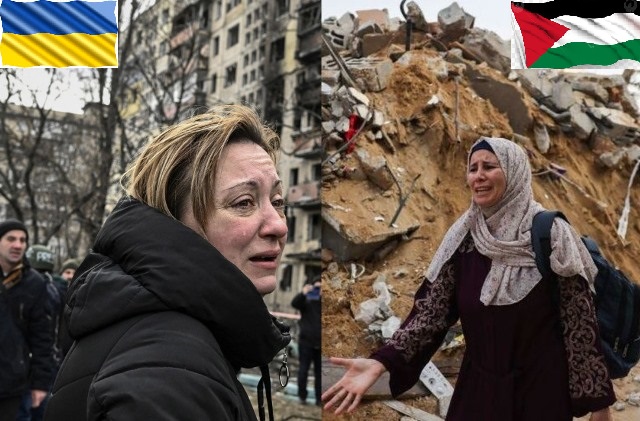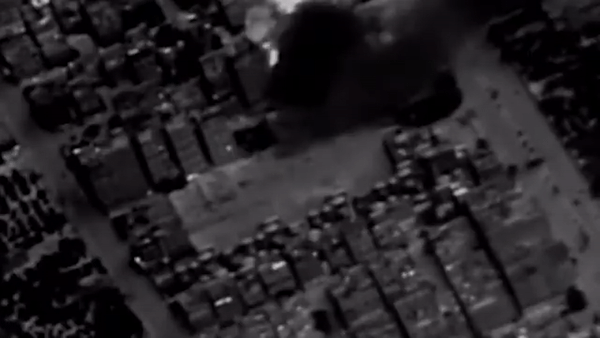Is the focus of the international media fickle? Since October when the Israel-Hamas war broke out in Gaza, much of the international media’s focus has moved from Ukraine to the Middle East. Russia’s offensive in Ukraine began in February 2022 and in three months, it will have lasted for two years, which is by any measure a very long period. The war there shows no sign of abating but the global media’s focus appears to have shifted to the Middle East. Reports on Ukraine and what is happening there don’t make it to the front pages of newspapers, news websites, or as the top stories on TV news channels.
Journalists sometimes explain these shifts as a response to reader (or viewer) fatigue that can set in when people are bombarded constantly with news about one situation, in this case the conflagration in Ukraine, which has been hogging prime time news and front-page headlines for months. There could be other reasons for the shift in focus.
The Middle East conflict is one of the most long-standing and complex issues in the world, involving many sensitive and controversial topics such as colonialism, imperialism, self-determination, self-defense and the Holocaust. It is also more dynamic and unpredictable: a conflict such as the ongoing one in Gaza can quickly escalate and involve other neighbouring nations such as Iran or others belonging to the Arab world. Also, the degree of involvement of global players such as the US in the area is higher. So is the polarisation among the world’s nations on the issue of who they support–Israel or Hamas.
In journalistic terms, the Middle East generates more news and updates compared to the relatively localised and contained situation in Ukraine. The situation in the Middle East, for instance, can directly impact the interests, stability, and security of several countries both in the regions as well as in the West. Instability in the Middle East can affect global oil prices and trade and, therefore, the global economy in a far bigger way than Russia’s ongoing offensive in Ukraine. Thus, it could be a more relevant and urgent issue for media outlets and their consumers.
Still, the loss of media attention on Ukraine could have an impact on the struggle against Russia’s invasion of Ukraine. International awareness of what is happening there is of importance for Ukraine in order for it to continue to get support from its international allies and sympathisers. If the focus of the global media on the region falters, Ukraine could find it hard to counter Russia’s propaganda and disinformation aimed at undermining Ukraine’s sovereignty.
What is happening in Ukraine right now? Let’s do a quick recap. Since February 2022, Russia has launched a major military offensive against Ukraine, violating the 2015 Minsk agreements that aimed to end the conflict in eastern Ukraine. Russia has amassed over 100,000 troops along the border with Ukraine, as well as deployed tanks, artillery, drones, and cyberattacks. It claims that it is defending the rights of the Russian-speaking population in the Donbas region, where pro-Russian separatists have been fighting the Ukrainian government since 2014.
However, Ukraine and its Western allies accuse Russia of aggression and territorial expansion, and have imposed sanctions and provided military aid to Ukraine. The fighting has intensified in recent weeks, especially along the Lyman front in northeast Ukraine, where Ukraine says it has repelled several Russian attacks with heavy casualties on both sides. The situation remains tense and volatile, as diplomatic efforts to de-escalate the crisis have failed so far.
How could it end in Ukraine? There are different scenarios that could emerge in the region. First, with neither side showing signs of compromising or giving up, the war might continue for months or years as Russian and Ukrainian forces grind each other down. The economic and humanitarian costs of this could be enormous.
In a scenario where, say, Russia wins by launching a very large-scale offensive and overruns most of eastern and southern Ukraine, including the strategic port city of Mariupol. If Ukraine is unable to resist or counterattack, and its Western allies offer only limited support, Russia could consolidate its control over Crimea and create a land corridor to it. Ukraine would be left weakened and isolated, and its aspirations to join NATO and the EU would come to nought.
If, however, Ukraine, with the help of its Western allies and partners, manages to repel or deter a large-scale Russian invasion and inflict heavy casualties on Russia, the Kremlin would face further international isolation and condemnation, while Ukraine could gain confidence and recognition and move closer to joining NATO and the EU.
The other less predictable factor is, however, how China’s clearly proclaimed support of Russia will play out in the emerging scenario. Beijing has endorsed its friendship with Russia but as of now it has not directly played a role in the ongoing conflict. If Russia decides to scale up its offensive by invading other countries in the neighbourhood, such as Belarus or Moldova, or uses nuclear weapons, things could go out of hand and the war could spin into a global crisis of dangerous proportions.
What is happening in Gaza right now? The conflict between Israel and Hamas, the Islamist group that controls the Gaza Strip, is one of the longest and most intractable in the Middle East. The latest round of violence erupted in October 2023, after a series of provocations and clashes in Jerusalem, the West Bank, and Gaza. Hamas and other militant groups fired thousands of rockets at Israel, while Israel responded with airstrikes and ground operations in Gaza. The war has killed more than 1,200 people in Gaza and 50 in Israel, and displaced more than 300,000 in Gaza and 100,000 in Israel. The war has also sparked unrest and violence among Israeli Arabs and Jews, and increased tensions with neighboring countries and regional powers.
How could it end in Gaza? In one scenario, it could end with a ceasefire agreement, which could be mediated by Egypt, the US, and the United Nations. The agreement could lead to opening border crossings, relaxing the blockade of Gaza and ensuring rebuilding of its infrastructure and disarmament of Hamas. However, the status of Jerusalem, the fate of Palestinian refugees, or the prospect of a two-state solution in the region would still remain elusive and that could mean that the embers of discontentment and conflict would continue to smoulder. Violence could erupt again and a rerun of the current conflict could happen anytime.
In the unlikely event that one side achieves a decisive victory then there could be other scenarios. For instance, if Israel eliminates Hamas’s leadership and capabilities, or if Hamas inflicts significant damage and casualties on Israel. The victory could also be influenced by the level and nature of the international involvement and pressure. The victory could create a new balance of power and reality on the ground, but it could also generate more resentment and resistance among the defeated side.
There is another disturbing scenario that could emerge and that is if the war continues indefinitely, with neither side able to defeat or deter the other. The war then becomes a chronic and low-intensity conflict in the region, punctuated by occasional flare-ups and quiet spells. This scenario would take a heavy toll on the civilian population, the economy, and the environment, and would hobble the prospects of peace and coexistence. It could also make the region more vulnerable to interference and involvement by external powers such as the West or China.
If, however, both sides see the benefits of a negotiated settlement, it could augur well for the regions. If a serious and sincere negotiation, involving all the relevant parties and stakeholders, is possible, and if it could address the root causes and grievances of the conflict there could be a possibility of a long-term comprehensive solution.
Such a negotiated accord would need mediation by a third party, say the US, the UN, or the Arab League. The aim of such a settlement, however, would have to be mutual recognition and respect, a stop to hostilities, and, most importantly, the creation of an independent Palestinian state coexisting with Israel. All of those, at least now, seem to be a tall order.
As the two wars continue and the media focus on each vacillating, the world must hope that neither of them turns into a full-blown conflagration. For that would be a catastrophe for all.
For more details visit us: https://lokmarg.com/


